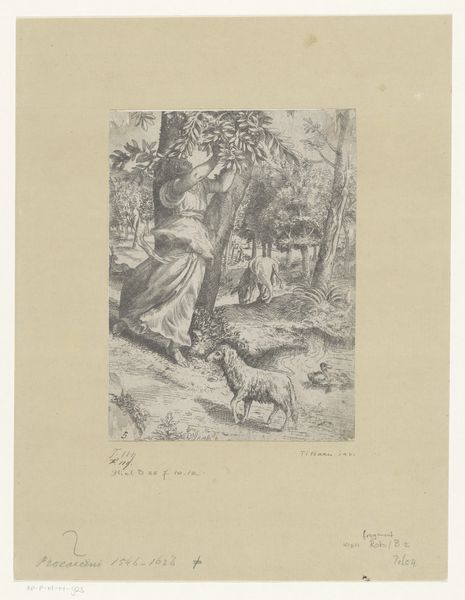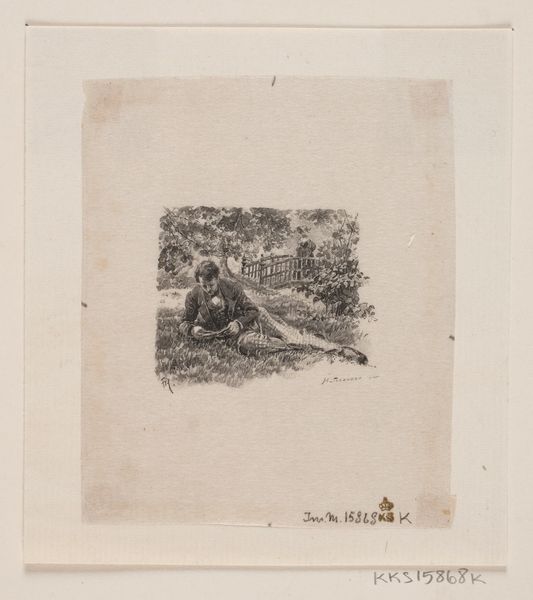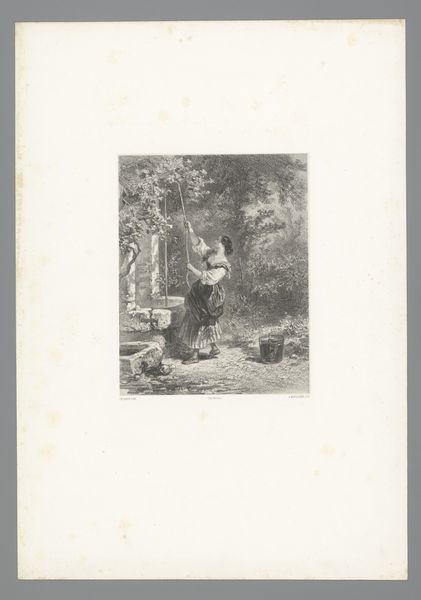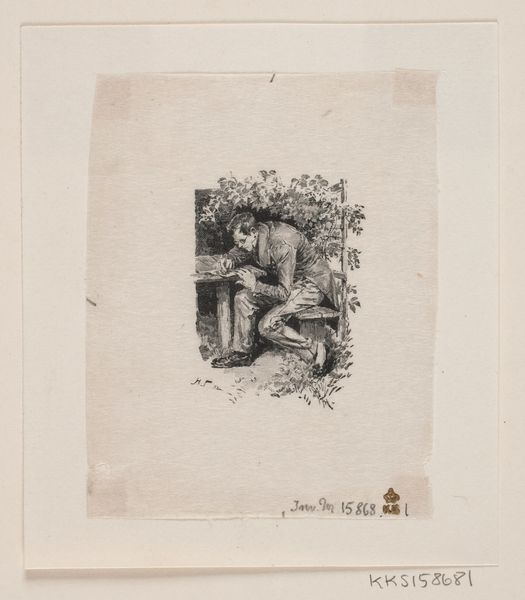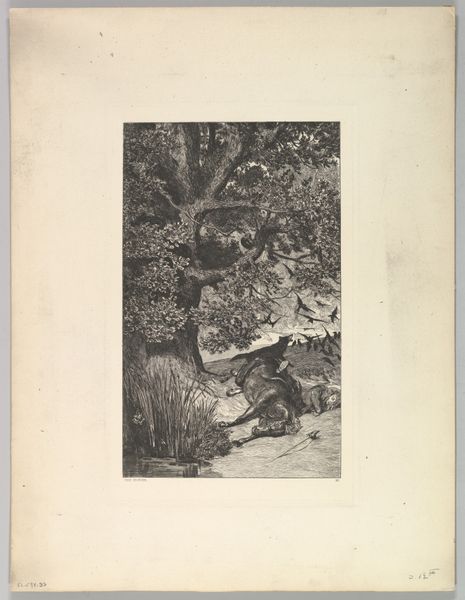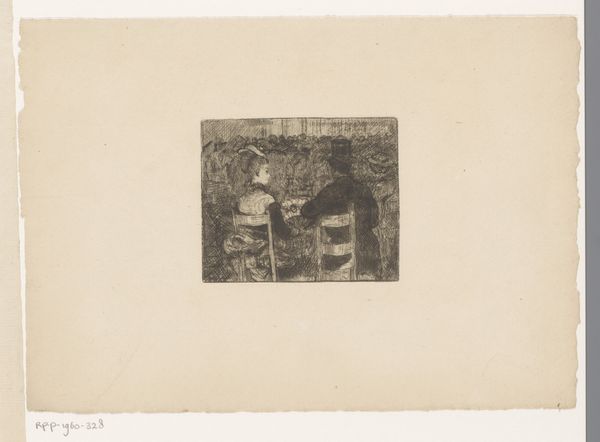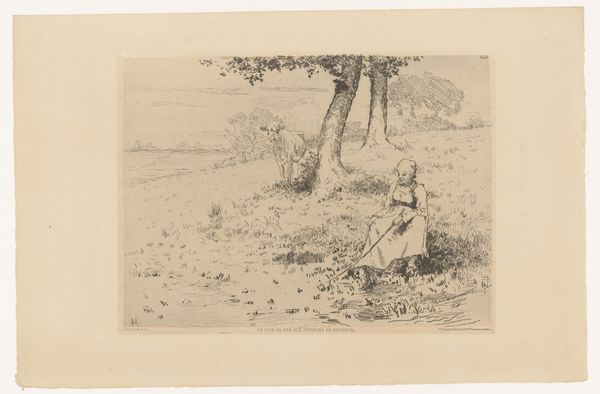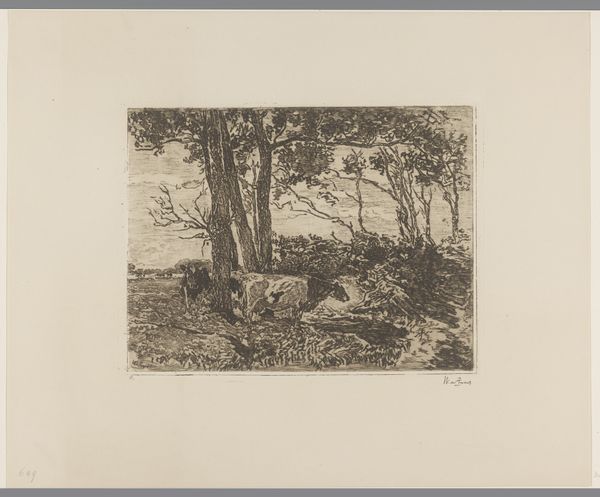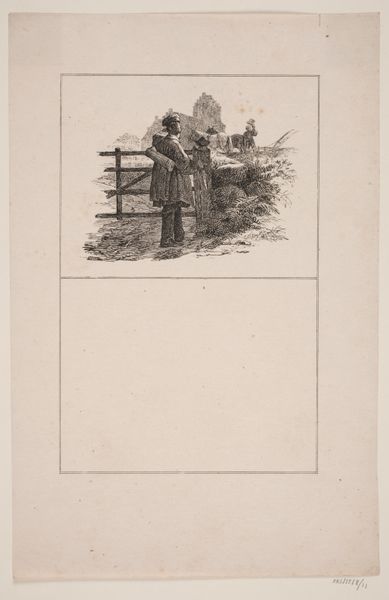
drawing, print, paper, ink, pencil
#
portrait
#
drawing
# print
#
landscape
#
paper
#
ink
#
pencil
#
genre-painting
#
academic-art
#
realism
Dimensions: height 316 mm, width 237 mm
Copyright: Rijks Museum: Open Domain
Curator: This is Louis Monziès's "Schildersmodel bekijkt een schilderij," or "Painter's Model Looking at a Painting," created around 1878. It's a print, utilizing ink and pencil on paper. Editor: It has this rather languid feel, doesn’t it? There’s a stillness to the scene. All rendered in such subtle grey tones, it gives a subdued, almost dreamlike quality. Curator: I find it interesting to think about the economy of representation here. A print, already a copy, depicting a model looking at a painting... the artwork becomes doubly removed from its source. Consider the rise of printmaking at this time and its use in popularizing images and art for a broader audience. What impact does this reproductive process have on perceptions of the "original?" Editor: True, it speaks to that wider consumption of art and how images were circulated. I’m struck by the chair, placed opposite the seated model. Almost as if she is reviewing an empty stage. Do you see the artist creating a dialogue around spectatorship and maybe even critiquing the conventional structures within art production? Curator: That resonates. The chair acts as a silent observer, underscoring the process of evaluating art itself. What about the materials at play? The work is all lines, hatched, drawn with pencil, or incised to the paper for the reproduction of image through print. This really reduces painting to almost its most rudimentary existence. Editor: Interesting! It really is, isn't it? In many ways, Monziès pulls back the curtain on the art-making process and leaves us to meditate on both subject and artist, with its distribution by print, to the hands of commoners. It makes you think about academic art and its ties to Realism. The bare feet, the lack of pomp or artifice - we get a glimpse of artmaking that seems almost intimate, a glimpse of an artist, captured, reproduced, and shared for anyone's perusal. Curator: I agree. There’s something quite modern about its self-awareness and reflection on its own creation and presentation. Editor: I am compelled by how the print embodies questions of originality, labor, and artistic conventions through its production method and subject matter. A powerful reflection on its time.
Comments
No comments
Be the first to comment and join the conversation on the ultimate creative platform.


